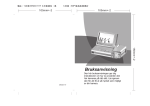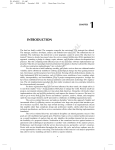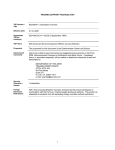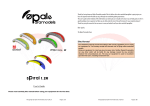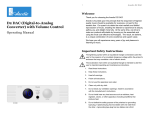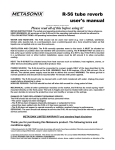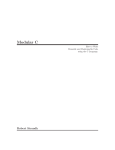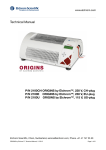Download DLS Ultimate TA2 Tube Amplifier & Ing. Elena Banu Reference
Transcript
DLS Ultimate TA2 Tube Amplifier & Ing. Elena Banu Reference Passive Preamp (concerning part is omitted) Double test this time, that interests the new passive preamplifier made by Ing. Elena Banu and the power amplifier which is the most desired from Northern Europe's car audio lovers, the DLS Ultimate TA2 Tube. Listening session rich of contents which, as already seen for the Iridium speakers system we listened last month, confirms that at DLS they do the things with the heart and the ears. Yes, because the power amp I have in my hands is the maximum synthesis of continuous and constant couplings between resistors, capacitors, and active components, looking for an amplifier presenting the best of all the experimented solutions. This is why the active and passive components which compose it were choosen and selected naturally starting from an excellent base, which has been developed step by step, where this version with tube stage represents the last release. Useless to speak about the ahestetical beauty of the amplifier which shows an extruded aluminum chassis finely brushedand anodized, which contrasts withthe small window on the top and protected by a light-yellow perspex, which allows to see the two small vacuum tubes. I was talking about the finishings carefully studied and accomplished, like the trimmers to adjust the gain and the hi-pass frequency, which are in golden metal, with click-potentiometers, armoured. The power amp is a pure dual mono starting from the power connectors, with a separate section for the tube's anodic power source which uses two CV 4010 pentodes made for recent military equipment (1984) and obtained as NOS (new old stock). The power is more than suitable with its 2x100 W on 4 ohm at 13.8 V rising up to 2x200 W on a 2 ohm load. I told that in the DLS TA2 has been used the best components to produce a high quality sound, where they did not save anything, like for example the use of a good 4 Analog Devices AD 712 JN to make the amplifier's high-pass circuitry, with variable frequency from 20 to 200 Hz and 12 dB/oct. slope. One curiosity: on the complete and comprehensive manualit is expressively declared not to use the DLS TA2 as a subwoofer amplifier! Then the magazine follows with the description of the passive preamplifier. The system To satisfy every possible curiosity about insertion of the passive preamplifier I forced myself to install a double source system, a minimalist one composed by a McIntosh 5000 straight connected to the DLS amplifier first and, then, interposing the passive preamp, while at the same time I set up the Soundstream DVDV 200 DVD player used as drive unit paired with an ADS DA 44 converter “tuned” in the output section, the volume of which was controlled by the Ing. Elena Banu preamp, in such a way to satisfy the possible requirement of insert the passive preamp either in preamplified-source systems or separate DAC systems. The rest of the system sees the DLS amplifier which runs a Ciare/Focal two way front system, besides the omnipresent PPI for the subwoofer section. The utilized system appears to be complex but not so much; also the installation has been done step by step, in such a way to taste in first place the DLS TA2 amplifier's qualities directly connected to the McIntosh 5000 headunit. Long preheating of the amplifier to let the tubes to warm-up (about 30 seconds), but then comes the music and it surprises you for the exceptional cleanliness and naturality of the sound message. So I remind of the manual which tells about one month of run-in before to ask the right statement to the quality of the amplifier and above all to the tubes... Honestly the distributor foretold me that for this test the components had to be already runt-in in Sweden before they was shipped and so they had to be ready to use. I listen carefully and, although the stage has “squashed” on the two side pillars, you can enjoy an incredible naturality of the sound message, so much to make really sound good also speakers which are a little bit too “wrinkled”. I remain disconcerted, from one side I'm surprised by the particular sweet and fluid sound shown by this amplifier, while from the other side I'm not able to understand the soundstage, which is completely evanished with an “empty” in the middle which goes from pillar to pillar! I then try to invert the phase on the output connections but the thing remains exactly the same: strange, it's never happened before, not even with other Dual Mono amps. I try not to think about it and to focus on the timbre, but that emptyness does not convince me and doesn't let me focus on other things. I decide then to complete the installation inserting the passive preamp and the Soundstream DVD player. That one is used as a pure mechanic coupled with an ADS digital/analog converter, equipment which has been modified in the output stage by replacement of the converters, now Burr-Brown, and of the decoupling capacitor. An attempt which awards me with an appreciated surprise: the insertion of the preamp between the McIntosh 5000 source and the DLS TA2 amplifier obtains the hoped closing of the soundstage, at a point that after a proper setting of the subwoofer amplifier's level the stage presents a single line which goes beyond the physical limits of the car. I don't know what's really happened to the musical signal nor what was able to produce such a big improvement on the soundstage, if a better impedance matching between the source and the amplifier, or a closed ground loop, or opened, but what I now listen to I recognize it is my soundstage, even more focused and present if compared to the usual aboard amplifier. The sound is free from any kind of forcing and if sometimes it seems to lack in dynamics you realize that the sensation disappears rising up the volume, and then you discover that power and dynamic are there at will. But there's also something different from the usual. Different is the way the system reproduces the tracks I already know and I now listen with unusual sensation of nimbleness and naturality. The sound flows away and you almost don't realize it. It is a strange sensation, difficult to report; it is like if the sound has shaked off a ballast becoming now more clean and crystal-clear; the absence of ballast doesn't involve a greater speed on transients but a superior sharpness of the sound message; like if the microinformations, the detail and the ambience are being reproduced at a higher recording level or, if you desire, taken to a more uncovered place. The high-efficiency system installed in the car is unforgiving toward not very musical electronics, but the sound which comes out is disarming for nimbleness and articulation, for the ability to outdraw the most minute particulars mantaining dynamic and detail. There's no one more or less evidenced part of the spectrum, but everything is reproduced as it is recorded; I realize it with “Beautiful Maria” by Alejandro Martinez, a piano and vocal track which is rich of “presence”, pathos and dynamic to the point to make me think I'm actualy two meters far from the piano. The DLSMcIntosh couple is without any doubt much performing than the Soundstream-ADS reading system, and shows the entire evolution that the conversion stages technology accomplished in the last few years, while the ADS converter reveals the age of a valid design which is anchored to old solutions and where even heavy “elaboration” nothing can do, if compared to the output stage and preamp of the McIntosh. In any case we're in front of a transparent amplifier, able to let appreciate inside-out the qualities of the headunit and of the possible active electronics placed along the signal, recalling to my mind the similar behavior of the Sinfoni Prestigio. Installing the high-pass filter aboard is a very intelligent and practical solution, because it avoids the signal to pass thru external electronic crossovers and so it allows to preserve an under control and high musical quality up to the output stages. A refined amplifier, dedicated to a high level speakers system, to integrate with a subwoofer unit to get a simple system with great performances. The user manual does not approve the use of the amplifier to run subwoofers, and I personally share the logic in this. Roberto Pallocchia Taken from ACS - AudioCarStereo n. 172 – April 2008







